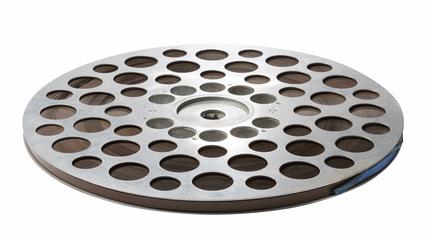
Peter Eric Axon 1917 - 1989
- occupation:
- Lecturer, Researcher, Teacher
- Nationality:
- British
- born in:
- Southgate, Plymouth, England, United Kingdom
Peter Eric Axon was born in Plymouth, and later moved to Teignmouth, South Devon with his family. He studied at Devonport High School in Plymouth, and then Teignmouth Grammar School. In September 1936 Axon passed his University of London Higher School examination and attended Imperial College.
A newspaper report in 1930 lists Axon obtaining a bronze swimming proficiency and lifesaving badge (bronze). On 6 June 1933 he used these skills to rescue a child from drowning in the sea at Teignmouth and revived them using chest compressions. He was awarded with a Royal Humane Society parchment for his life-saving effort.
In the 1939 survey, Axon is listed as a University Teacher, living in Teignmouth. He enlisted in the army as an officer cadet in the Royal Engineers on 4 October 1939 and was granted a commission in the RAFVR on 21 February 1940 via a letter from the Air Ministry.
In the RAFVR Axon started off as a pilot officer in the Administrative and Special Duties Branch, before transferring to the Technical Branch in April 1940. Newspaper reports record that Acting Flight-Lieutenant Axon was awarded an MBE in February 1941, for working on repairs throughout the night at his bombed-out Air Force station, despite the risk of unexploded high-explosives around him. Axon was promoted to Flight-Lieutenant, then Squadron Leader and by 6 Feb 1944 the London Gazette reported that Wing Commander Axon (77800) was mentioned in dispatches for his service in Italy and North Africa. In the 1945 New Year Honours List Axon was awarded an OBE for his service in the RAF.
After the war, Axon joined the Engineering Research Department in the BBC as Head of the Recording Unit in 1947. He was also a lecturer in the Electrical Engineering Department at Imperial College, University of London.
In 1952 the BBC started the Vision Electronic Recording Apparatus (VERA) project, to create an analogue recording format. This was headed up by Peter Axon. VERA used a very large 50cm diameter reel of tape, which could record 15 minutes of footage. The system was not perfected until 1958, which led to a demonstration by Richard Dimbleby on 14 April 1958 on Panorama. The footage was wobbly, but it was the first-time viewers would have seen instant playback footage.
Unfortunately, American company Ampex had already perfected the superior Quadruplex video recording system two years earlier, so VERA was abandoned and the Ampex system introduced at the BBC. Axon left the BBC around the same time, in 1958.
Interestingly, when Ampex began to manufacture magnetic recording tape equipment in Britain, Peter Axon headed up the division as ‘an authority on audio and video magnetic recording research and equipment’. By Friday April 29 1960, Axon was noted to be Managing Director of Ampex Electronics and Managing Director Redwood City Engineering, a UK marketing subsidiary of Ampex International SA (Switzerland). In 1966, Dr. Axon was giving interviews about future products the company was producing, including domestic video recording machines. He hoped they would be on sale within the next year, for schools and the home. 'The Times' on Wednesday 30 October 1968 noted that he had joined the board of Stone-Platt industries and from November 25 would be Chief Executive of the electrical division, moving from Ampex.
Outside of work, Dr. Axon was a member of the Reading Education Committee from 1963 to 1969. He was co-opted to join because of his special experience in industry and commerce. In 1979 Axon was made a CBE and was listed as the Chair for the Pumps and Valves Sector Working Party. He died in January 1989 in Henley-on-Thames.